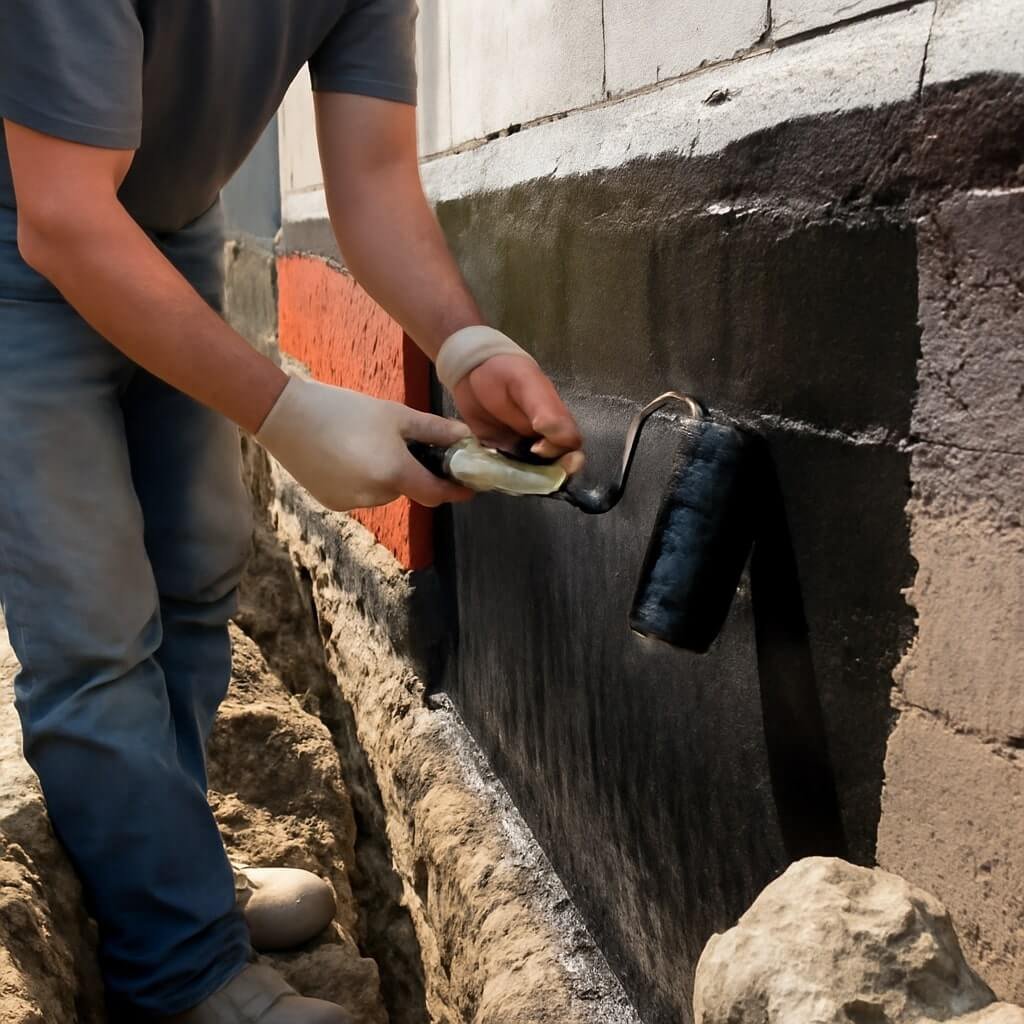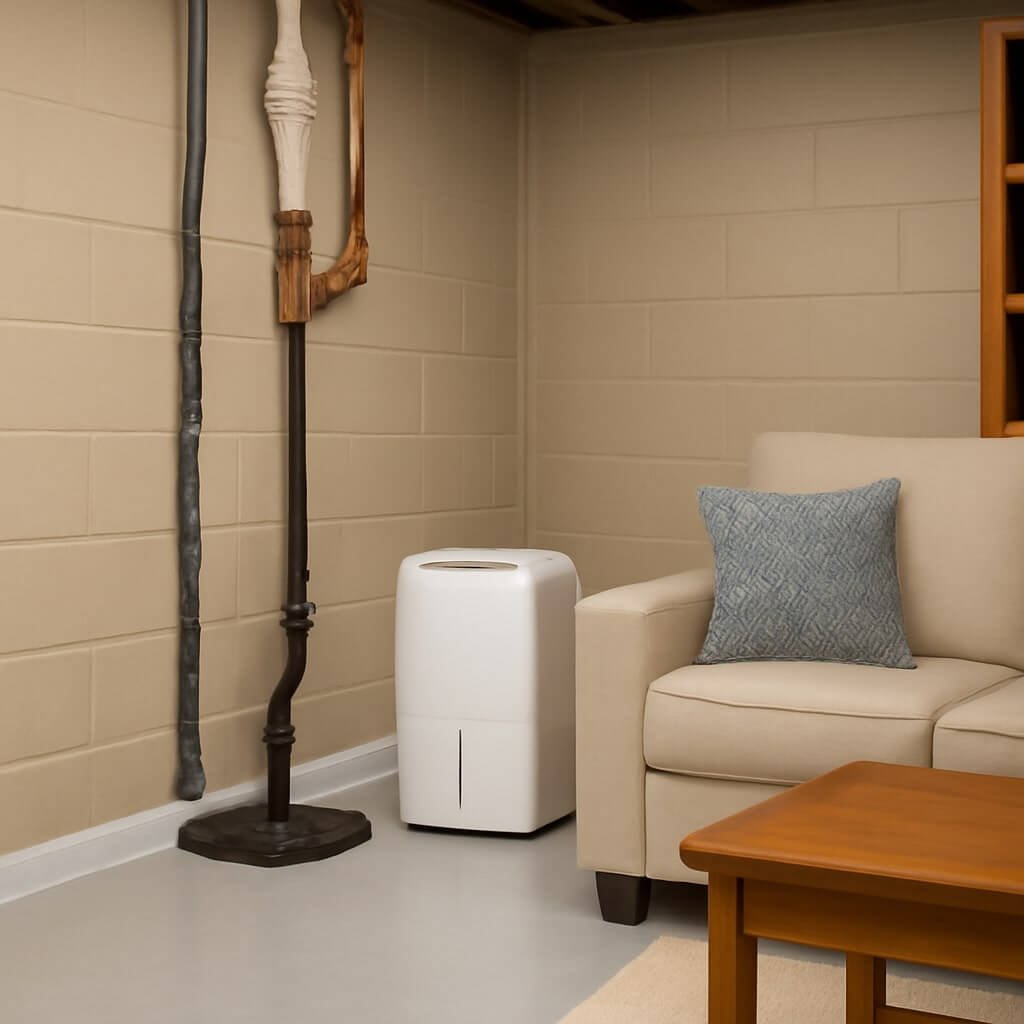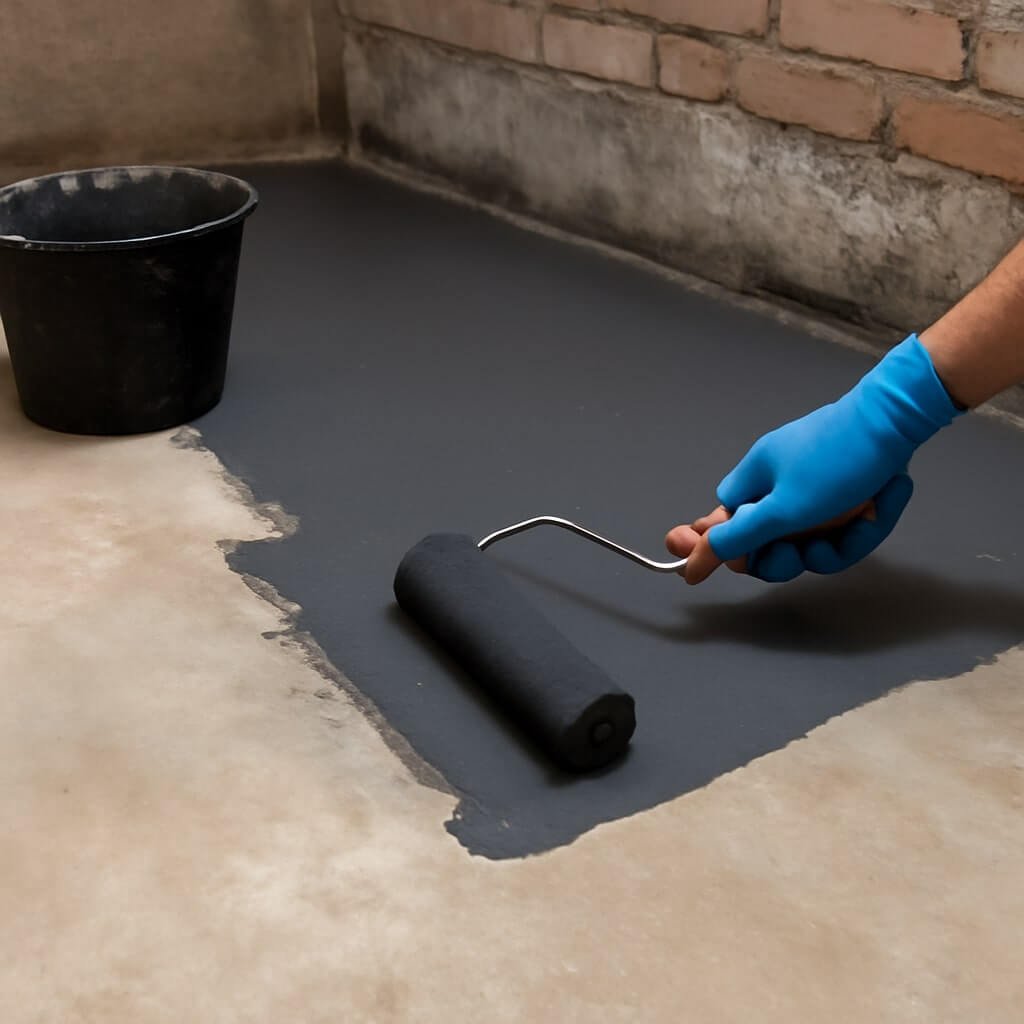Basement waterproofing is the process of preventing water from penetrating into your basement space. This protection is essential for maintaining a dry, healthy environment beneath your home. Without proper waterproofing, basements are prone to water seepage, which can lead to mold growth, structural damage, and a decrease in your property’s value.
Homeowners often overlook the importance of basement waterproofing until they experience a problem. However, understanding what basement waterproofing entails and how it works is the first step in safeguarding your home. Typically, waterproofing involves a combination of interior and exterior techniques designed to redirect water away from your foundation and create a moisture-resistant barrier.
Waterproofing doesn’t just keep water out; it also prevents the musty odors and health hazards that come with damp environments. For anyone living in a region with heavy rainfall or a high water table, basement waterproofing is an investment in long-term comfort and safety.
Why Basement Waterproofing is Essential for Homeowners
Water intrusion is one of the most common and costly problems that homeowners face. Basement waterproofing isn’t just about convenience; it’s a critical defense for your home’s integrity. Here are some reasons why basement waterproofing is essential:
Preventing Water Damage and Mold
Water leaking into your basement can cause extensive damage to walls, flooring, and personal belongings. More importantly, moisture creates the perfect environment for mold and mildew to thrive, which can cause respiratory problems and allergies.
Maintaining Home Value
A wet or damaged basement can significantly reduce the resale value of your home. Potential buyers often view a damp basement as a major red flag. Waterproofing ensures that your home remains attractive and structurally sound, protecting your investment.
Signs You Need Basement Waterproofing
Knowing when to waterproof your basement can save you from costly repairs down the line. Here are some common signs that indicate it’s time for basement waterproofing:
Visible Water Seepage
One of the clearest indicators is water pooling or dripping inside your basement, especially after heavy rains. You might also notice damp spots on walls or floors.
Musty Odors and Mold Growth
A persistent musty smell or visible mold patches are signs that moisture is present. These health hazards should not be ignored.
7 Basement Waterproofing Methods Explained
There are several effective basement waterproofing methods available, each suited to different needs and budgets. Here’s a breakdown of the seven most powerful techniques:
1. Interior Drainage Systems
Interior drainage systems involve installing channels or drains around the interior perimeter of your basement floor. These drains collect water that seeps through the walls or floor and direct it to a sump pump, which then expels the water away from the home.
Pros: Cost-effective, prevents flooding inside the basement.
Cons: Doesn’t stop water from entering the walls, but manages it once inside.
2. Exterior Waterproofing Membranes
This method applies waterproof coatings or membranes on the exterior walls of your basement foundation. It creates a barrier that prevents water from entering the concrete or masonry walls.
Pros: Prevents water penetration at the source, highly effective.
Cons: Requires excavation around the foundation, which can be expensive and disruptive.
3. Basement Wall Crack Repair
Cracks in basement walls can be major entry points for water. Repairing these cracks with epoxy injections or hydraulic cement seals the gaps and strengthens the walls.
Pros: Relatively simple and inexpensive fix.
Cons: Only effective if cracks are small and not caused by structural issues.
4. Sump Pump Installation
A sump pump collects water from inside the basement and pumps it away from the foundation. It’s often used in conjunction with interior drainage systems.
Pros: Prevents flooding, reliable during heavy rainfall.
Cons: Requires electricity; pumps can fail without backup power.
5. French Drains
A French drain is a gravel-filled trench with a perforated pipe that redirects surface water away from your foundation. Installed outside the home, it intercepts water before it reaches the basement walls.
Pros: Effective for groundwater management, reduces hydrostatic pressure.
Cons: Installation can be costly and labor-intensive.
6. Vapor Barriers and Sealants
Applying vapor barriers on basement walls and floors helps block moisture vapor from penetrating the basement space. Sealants and waterproof paints add an extra layer of protection.
Pros: Affordable, easy to apply as a preventive measure.
Cons: Less effective if there is actual water leakage.
7. Landscaping and Grading Adjustments
Proper grading ensures that the land slopes away from your foundation, directing rainwater away. Landscaping techniques such as installing gutters and downspouts also reduce water pooling near your home.
Pros: Prevents water accumulation around the foundation, low cost.
Cons: Requires maintenance and may not be sufficient alone.
Cost Comparison of Basement Waterproofing Methods
Cost varies widely depending on the method, materials, and labor. Here’s a rough estimate:
| Method | Estimated Cost Range (USD) |
|---|---|
| Interior Drainage Systems | $3,000 – $10,000 |
| Exterior Waterproofing Membranes | $8,000 – $15,000 |
| Basement Wall Crack Repair | $500 – $2,500 |
| Sump Pump Installation | $1,000 – $3,000 |
| French Drains | $4,000 – $12,000 |
| Vapor Barriers and Sealants | $500 – $2,000 |
| Landscaping and Grading | $1,000 – $5,000 |
Choosing the right method depends on your budget and the severity of water problems.
DIY vs Professional Basement Waterproofing
Some waterproofing methods, like applying sealants or minor crack repairs, can be done by handy homeowners. However, large projects such as exterior membrane installation or French drains often require professional expertise due to complexity and safety concerns.
If you’re unsure, consulting a basement waterproofing specialist can help you choose the most effective and cost-efficient solution for your home.
Maintenance Tips for a Waterproof Basement
Even after professional waterproofing, regular maintenance is key:
- Clean gutters and downspouts regularly
- Check sump pump functionality twice a year
- Inspect basement walls for new cracks or leaks
- Keep landscaping graded away from the foundation
- Use a dehumidifier to control basement humidity
Frequently Asked Questions (FAQs)
How long does basement waterproofing last?
With proper maintenance, basement waterproofing can last 10 to 25 years, depending on the method used.
Can I waterproof my basement myself?
Some methods, like applying sealants, can be DIY, but professional help is recommended for structural repairs or exterior work.
Will waterproofing increase my home’s value?
Yes, a dry basement is a major selling point and can significantly increase property value.
How do I know if my basement needs waterproofing?
Signs include visible water seepage, damp smells, mold growth, and cracks in foundation walls.
What is the most effective waterproofing method?
Exterior waterproofing membranes combined with proper drainage are generally the most effective.
is basement waterproofing covered by home insurance?
Usually, waterproofing isn’t covered by insurance, but it can prevent costly water damage claims.
Conclusion: Securing Your Home with the Right Waterproofing Method
Choosing the best basement waterproofing method depends on your home’s specific needs, budget, and local environmental factors. From interior drainage to exterior membranes, there are powerful solutions available to protect your basement from moisture and damage.




